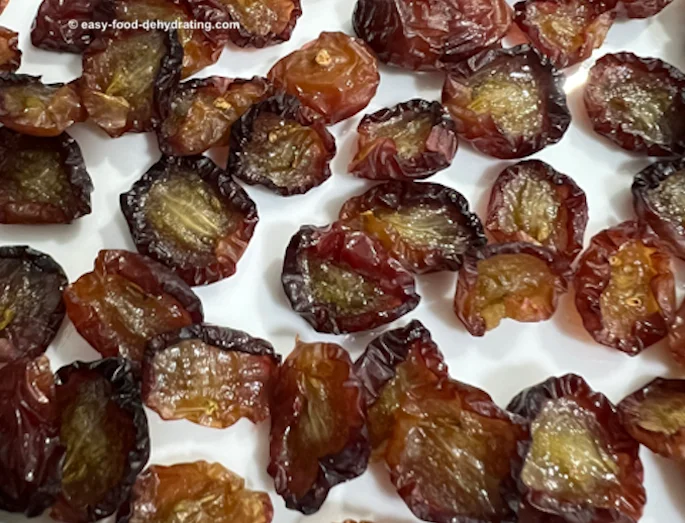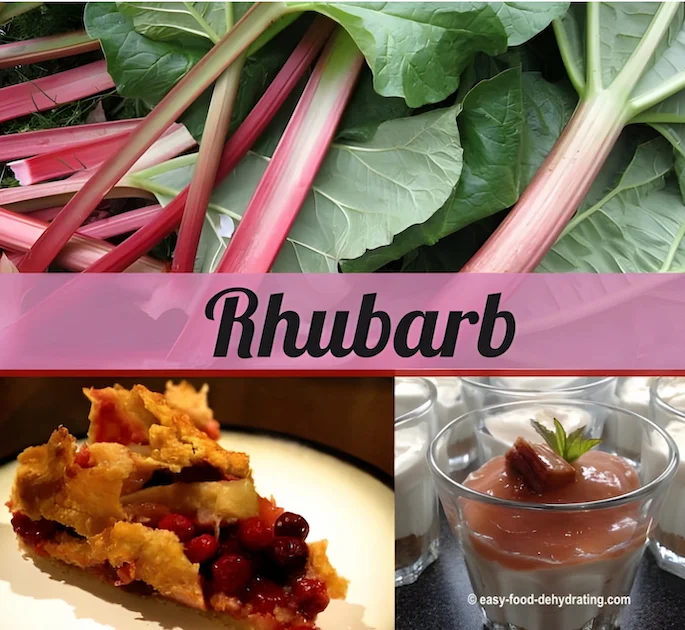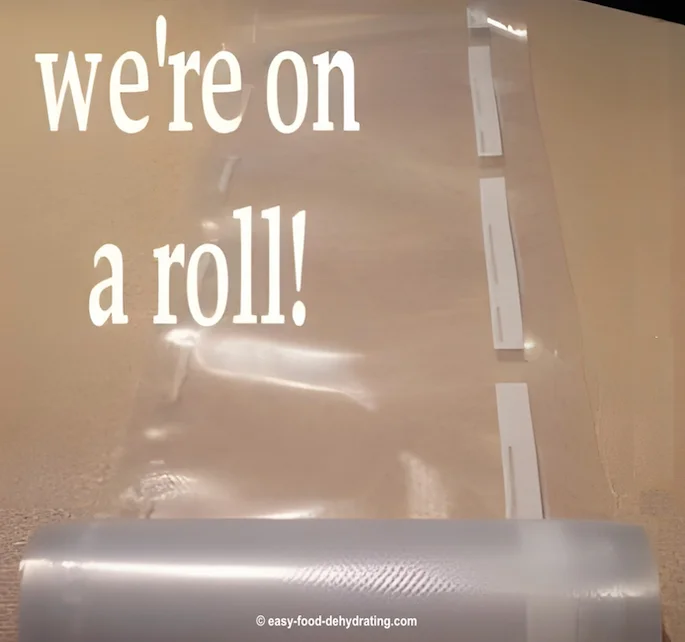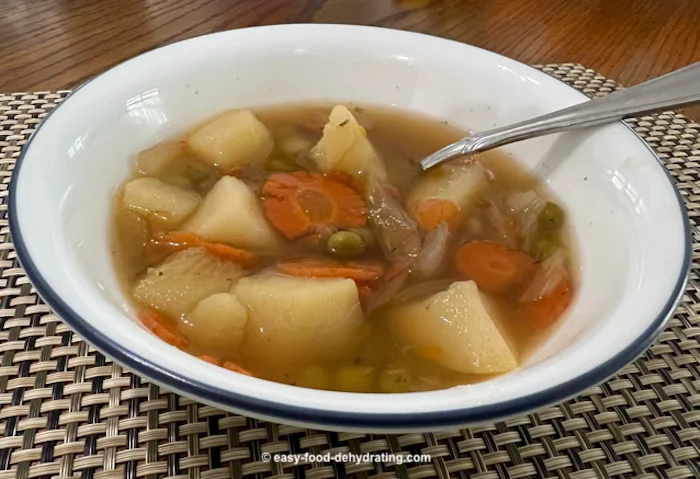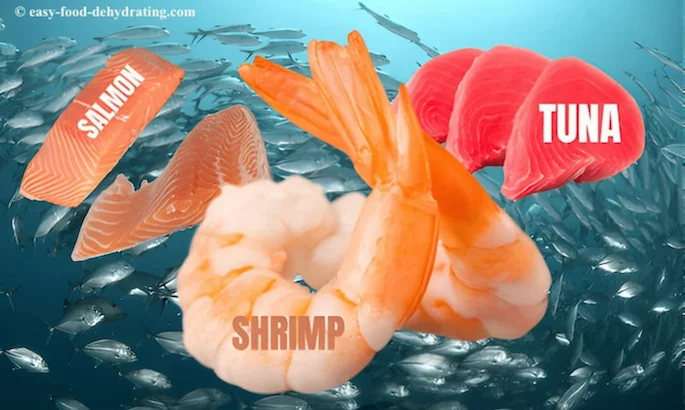- Home
- How to Dehydrate Fruit: Easy Tips for Perfect Results
- How to Dehydrate Citrus
How to Dehydrate Citrus:
Lemons, Limes, and Oranges

Susan Gast, Author | Blogger at Easy Food Dehydrating, Bored Boomers, Beesville Books, and A New Sober You
Are you ready to learn how to dehydrate citrus? If not, put them at the top of your
dehydrating 'to-do' list! It's so easy to do.
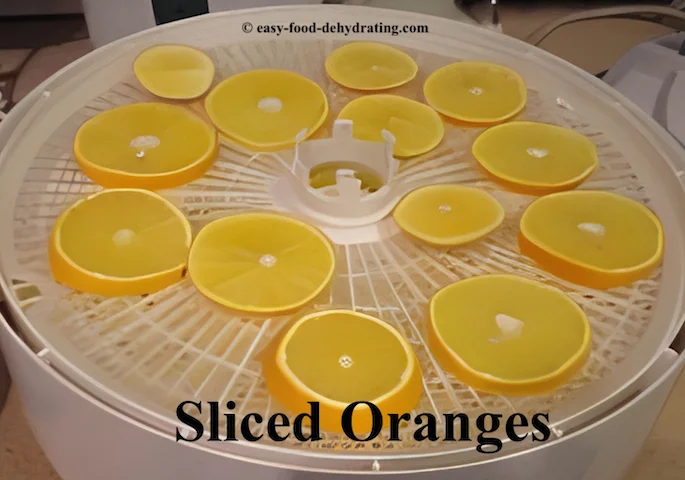
Dehydrated Citrus is Ideal for Recipe Flavoring
Grab your cutting board and a really sharp knife.
Begin by Using a Good Sharp Knife by Cutluxe!
Check out this great chef's knife with a full tang that means the handle and blade "are one" so they can't come apart when we're slicin' and a dicin'.
I know these Cutluxe Chef knives may be a little expensive, but they do last pretty much a lifetime when you maintain their cutting edges.
As an Amazon Associate, I earn commission from qualifying purchases. The price you pay does not increase. Read disclosure here.
...or treat yourself to one of these like I did!
SUPMAKIN Slicer + Dicer Mandoline ~ OnceForAll Brand
French fry cutter, vegetable chopper, vegetable slicer cutter, potato slicer, chopper for kitchen meal prep.
A multi-function mandoline that I just couldn't resist getting!
FAQs: Your Quick Citrus Dehydrating Cheatsheet
How do you dehydrate citrus in the oven?
How do you dehydrate citrus in the oven?
Slice citrus thinly (⅛–¼ inch), arrange on parchment-lined trays, and dry at your oven’s lowest setting (140°F-150°F) for 6–10 hours. Flip slices halfway through for even drying. They’re ready when stiff and brittle with no moisture pockets.
Can I dehydrate citrus in an air fryer?
Can I dehydrate citrus in an air fryer?
Yes! Set your air fryer to its lowest temp (around 95°F–115°F or “warm” mode). Thinly sliced citrus dries in 2–5 hours. Flip slices halfway through for even results. They’re done when crisp and completely dry.
What are the best ways to use dehydrated citrus?
What are the best ways to use dehydrated citrus?
Use dried citrus for garnishing cocktails, flavoring teas, adding to soups and sauces, or grinding into flavorful zest for baking and cooking.
I love using dried orange in my carrot soup!
How do you know when dehydrated citrus is fully dried?
How do you know when dehydrated citrus is fully dried?
Fully dehydrated citrus will feel stiff and snap easily when bent. No squishy spots, no moisture pockets. The edges often curl up — a good sign it's done!
Step-by-Step: How to Dehydrate Citrus Like a Pro
- Wash the skins of your citrus fruits.
- Slice the citrus into 3/8" thick slices and arrange on your food dehydrator trays.
- Turn on your food dehydrator and set the temperature between 125°F and 135°F (or per your food dehydrator's instructions).
- Drying time: between 2-12 hours.
💡 Tip: Use our Fahrenheit to Celsius converter here on our site!
- Citrus is brittle when dried fully.
- Please remember to rotate your dehydrator trays for even drying.

Dehydrating Citrus is So Easy!
Citrus is probably one of the easiest fruits to dehydrate.
Sadly, not one of the most edible slices of fruit to eat when dried, in my humble opinion!
BUT, read on to see how easy it is to dehydrate citrus for use in recipes and drinks!
Citrus Nutrition Info.
LEMONS + LIMES + ORANGES
Lemons
VITAMINS: High Vitamin C content along with vitamin A.
MINERALS: High in Potassium and Calcium and also
contain decent amounts of Magnesium and Phosphorus.
Limes are very often used in drinks and for the famous Key Lime Pie dessert!
VITAMINS: Limes contain good amounts of Vitamins A and C and contain Folate and Choline too.
MINERALS: Limes have Calcium, Iron, Magnesium and Phosphorus.
Oranges
VITAMINS:Loaded with Vitamin C, plentiful Vitamin A, and Folate.
MINERALS: Oranges score well in Calcium, Magnesium, Phosphorus, and Potassium.
All three citrus fruits contain Omega-3 and Omega-6 fatty acids.
Read how to dehydrate GRAPEFRUIT HERE.
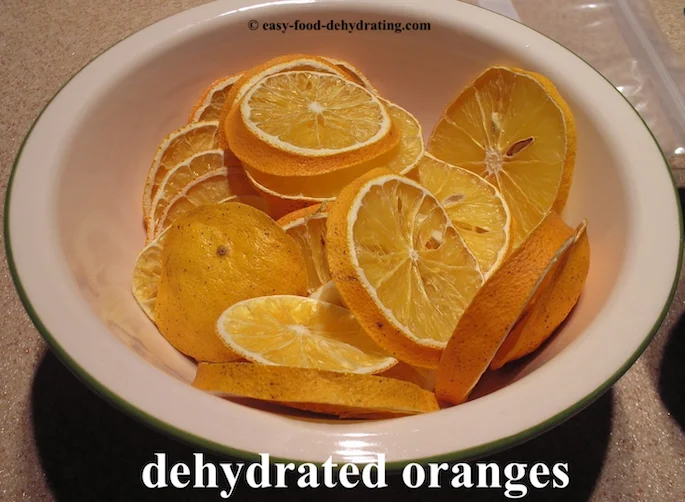
Dehydrated Citrus: Why Light and Crispy Is the Goal
The dried oranges shown in the bowl above are so lightweight! They make a really neat musical tinkling sound when tossed.
Genius Ways to Use Dehydrated Citrus You’ll Love
Don't forget that these dehydrated citrus rinds can be great ground up to be used for recipe flavorings and for baking!
If you remove the dehydrated rind and its white pith, the dried fruit centers make a tasty snack. The pith is the bitter-tasting part of citrus.
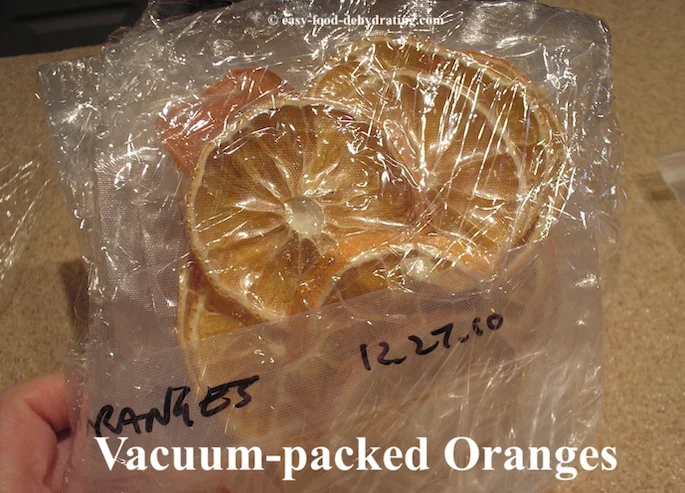
How to Vacuum-Seal Citrus Slices for Long-Term Freshness
This is what dehydrated oranges look like in the image above after they've been vacuum-sealed and wrapped in plastic wrap – ready to be stored away for long-term storage.
Check out the deals on Amazon below for plastic wrap. Target stores also have their own brand which I've used with good results.
Smart Citrus Storage: Plastic Wrap Picks That Work
- 400 square foot roll. Clings tight, easy-to-handle wrap
- Microwave safe
- Keeps food fresh
- 200 square foot roll. Clings tight, easy-to-handle wrap
- Microwave safe
- Keeps food fresh
As an Amazon Associate, I earn commission from qualifying purchases. The price you pay does not increase. Read disclosure here.
Lemons - Before and After Dehydrating :-)
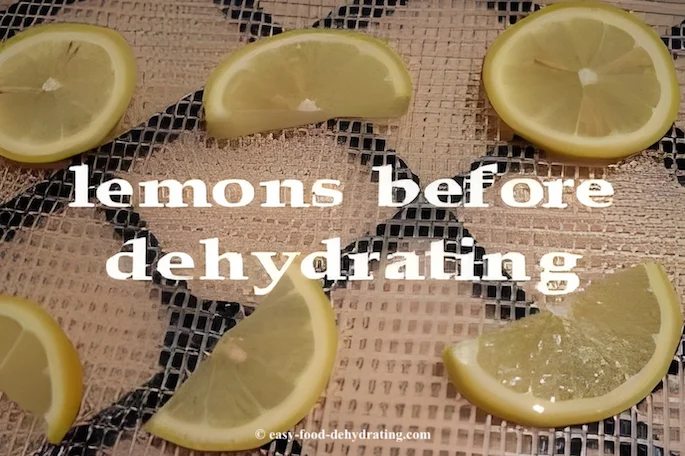
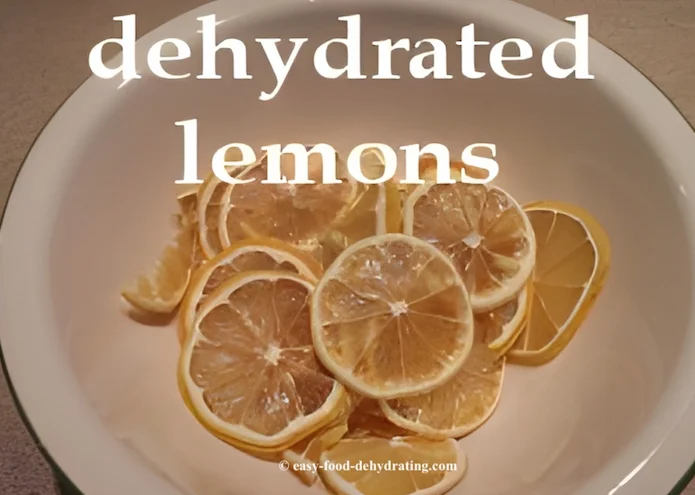
Ahh ~ The Scent of Orange Blossom: Love It, or Hate It?
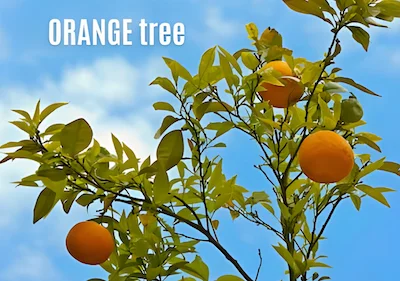
Living in central Florida, I'm lucky enough to have a few orange trees in our front yard.
But across the street are vast orange groves, and
boy oh boy, can you ever smell the orange blossom scent when they're in
full bloom!
To me, the orange blossom scent is one you either love or hate! I'll leave you guessing which side of the citrus fence I'm on! :-)
If you want to know more about growing citrus in Florida, please visit Gardening Solutions/University of Florida.
Top Orange Producing Areas:
Oranges are grown in warm climates all over the world. The three biggest orange-producing countries are:
- Brazil
- United States
- China
Oranges are typically harvested from October to March. This can vary depending on the climate and the specific variety of orange.
What is the Best Way to Plant Orange Trees?
Orange trees are best planted in areas that receive full sun and have well-draining soil. The trees should be spaced about 8-10 feet apart.
When planting orange trees, it’s important to plant them at the same depth they were growing in at the nursery. This will help the roots establish themselves quickly.
What is the Best Fertilizer for Orange Trees?
Orange trees need to be fertilized regularly to produce healthy fruit. A good fertilizer for orange trees is one that is high in nitrogen and potassium.
Apply fertilizer to the soil around the tree three times per year: once in the spring, once in the summer, and once in the fall.
Orange trees typically take 3-5 years to produce fruit. This can vary depending on the climate and the specific variety of orange trees. You need to have patience and proper planning.

Where are Lemons and Limes Grown?
Lemons and limes are grown in warm climates all over the world. The three biggest lemon and lime-producing countries are Brazil, the United States, and Mexico.
Lemons and limes are typically harvested from October to March. This can vary depending on the climate and the specific variety of lemon or lime.
What is the Best Way to Plant Lemon and Lime Trees?
Lemon and lime trees are best planted in areas that receive full sun and have well-draining soil. The trees should be spaced about 8-10 feet apart.
When planting lemon and lime trees, it’s important to plant them at the same depth they were growing in at the nursery. This will help the roots establish themselves quickly.
What is the Best Fertilizer for Lemon and Lime Trees?
Lemon and lime trees need to be fertilized regularly to produce healthy fruit. A good fertilizer for lemon and lime trees is one that is high in nitrogen and potassium.
Apply fertilizer to the soil around the tree three times per year: once in the spring, once in the summer, and once in the fall.
Lemon and lime trees typically take 3-5 years to produce fruit. This can vary depending on the climate and the specific variety of lemon or lime trees.
So when you've got left-over fruit, you need to learn how to dehydrate citrus! And now you know just how easy that is to do with Easy Food Dehydrating helping you every step of the way!
Thanks for stopping by “How to dehydrate citrus.” I hope you've learned a lot!
Grab 5 Dried Food Recipes You'll Actually Love
Don't forget to grab a copy of our all new
5 Dried Food Recipes (That Actually Taste Great)
They're my all-time favorite easy dried food meals!
Get it here right now.
For Free!
Before You Go...
If you like the content, please give me some love by clicking on the 🩷 in the lower right-hand corner (on just about all my pages). This signals to me that you find it enjoyable and useful.
And don’t forget to grab your FREE 5 Dried Food Recipes via the opt-in form — they're waiting for you! Thank you so much! (Get it here).






